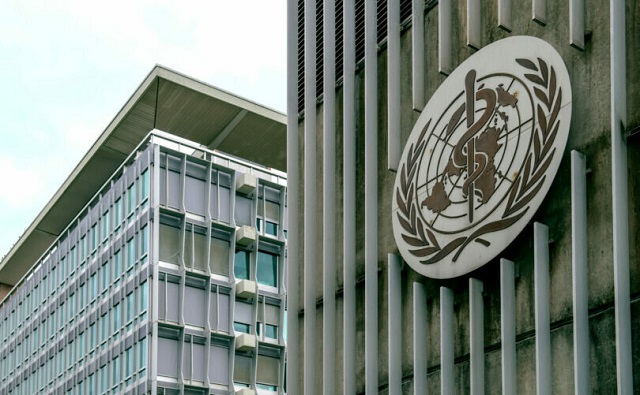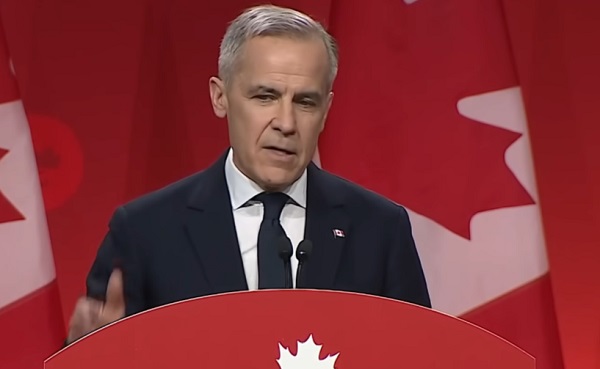Business
Musk Quietly Inserts DOGE Across Federal Agencies In Move That Could Uproot $162,000,000,000 Govt Industry


From the Daily Caller News Foundation
By Emily Kopp
As federal employees launched protests of entrepreneur Elon Musk’s disruption of federal agencies last week, the Office of Personnel Management quietly released a memo shoring up the formal structure of the Department of Government Efficiency (DOGE).
An OPM memo dated Feb. 4 seeks the redesignation of chief information officers across the government from career positions to political appointees. OPM has recommended that every agency send a request to OPM to reclassify its CIO role from career reserved to “general” by Feb. 14.
The new CIO positions will be working with DOGE, a source familiar confirmed to The Daily Caller News Foundation.
The new memo gives the greatest detail about how DOGE will operate within the federal government since a Jan. 20 executive order. Yet it has been entirely overlooked by the legacy press, which has relied largely on career officials within the government who characterize DOGE’s actions as extra-governmental. Democrats like New York Rep. Alexandria Ocasio-Cortez have sought to portray the effort as a “coup.”
However, the memo shows that DOGE is attempting to regularize its operations within the federal government.
“It is a focus of President Trump’s administration to improve the government’s digital policy to make government more responsive, transparent, efficient, and accessible to the public, and to make using and understanding government programs easier,” the memo reads.
Unlike most major institutions, the federal government has no central IT department. Instead, IT responsibilities are dispersed across federal agencies which in turn spend billions on contractors and disparate artificial intelligence technologies. Musk’s housecleaning could reshape this $163 billion industry.
DOGE is the renamed U.S. Digital Service. The U.S. Digital Service is a small office within the White House created to build the health care exchanges under the Affordable Care Act and advises on technical strategy. How the DOGE office in the Eisenhower Executive Office Building will liaison with CIOs throughout the government is not yet clear.
A Washington Post report revealed Monday that Edward Coristine, the 19-year-old DOGE team member known online as “Big Balls,” has been stationed at the State Department’s Bureau of Diplomatic Technology. The Bureau of Diplomatic Technology provides IT services.
The memo states that the new DOGE-aligned CIOs will take on a major role in public policy on technology.
The memo gives some insight into what they will prioritize, like improving government procurement policies and privacy, and deprioritize, namely diversity, equity and inclusion (DEI) initiatives.
“Poor technology-procurement policies can endanger property and privacy rights. Inadequate security policies can lead to vulnerabilities and hacks,” it states. “Emphasis on policies like [Diversity, Equity, Inclusion, and Accessibility] siphons labor and resources from other core government objectives.”
The Biden administration helped lay the groundwork for the change. Two earlier OPM memos cited in the Feb. 4 memo broadened the authority of government appointees to look outside of government for highly technical roles, including one released in the final months of the last administration.
A 2018 OPM memo under the first Trump administration noted “severe shortages of candidates and/or critical hiring needs” for STEM and cybersecurity. A September 2024 memo released under the Biden administration noted that “severe shortage of talent” in cybersecurity and other high-tech sectors persisted.
The new memo states that moving certain CIO positions away from career positions could help to alleviate it by dramatically increasing the number of candidates available to fill these important roles.
The move is in keeping with public statements about DOGE made by Musk and former DOGE co-lead and potential Ohio gubernatorial hopeful Vivek Ramaswamy about improving the federal government’s tech infrastructure, including examining the vendors the U.S. government works with and the fact that these systems don’t communicate across agencies.
Musk’s biography on his website X reads “White House Tech support.”
“My preferred title in the new administration is Volunteer IT Consultant,” Musk wrote on X on Dec. 9. “We can’t make government efficient & fix the deficit if the computers don’t work.”
“The federal government is the world’s largest IT customer… In theory, this *should* give us great buying power to negotiate good deals for taxpayers, but of course that’s not what happens,” Ramaswamy said on Dec. 5. “If the federal government were serious about reducing costs, it would procure government-wide licenses.”
Despite the intense focus on DOGE, there has been little discussion of the federal government’s existing methods for managing data and records.
The top five contractors on IT together took in $45 billion in 2024, according to Washington Technology, a trade publication that uses federal procurement data, USASpending.gov and company Security and Exchange Commission filings.
Musk’s SpaceX was the 39th largest federal contractor in government technology at approximately $1 billion. That represents about one third of Musk’s reported $3 billion in contracts with the U.S. government. Musk’s contracts in IT include the delivery of Starlink satellite internet units and services to national and state parks and the State Department, and the provision of a satellite network called Starshield to the U.S. Space Force.
While Musk’s potential conflicts have been in the spotlight, all of the top five current contractors on government IT have either a former government official or member of Congress on their boards of directors, and sometimes multiple government officials. They include a former admiral, a former Pentagon acquisitions official, joint chiefs of staff leadership, a former deputy secretary of defense, and a former chair of the Armed Services Committee.
In addition, all of these companies use various artificial intelligence technologies across all of their federal contracts, many of them non-open source.
Musk and DOGE were dealt a setback on Saturday when District Judge Paul Engelmayer ordered a temporary stop on DOGE’s work with U.S. Treasury data, citing cybersecurity concerns. The suit was filed by New York Attorney General Letitia James and 18 other state attorneys general.
A Washington Post story reported Friday night that Booz Allen Hamilton had described the DOGE team’s access to Treasury data — reportedly “read only” access that doesn’t allow for data manipulation — as “the single greatest insider threat risk the Bureau of Fiscal Services has ever faced.”
The company put out a statement hours after the assessment became public.
“Booz Allen did not conduct a threat assessment or make recommendations regarding DOGE,” a statement read. “Commentary provided in a draft document by a subcontractor contained unsubstantiated personal opinions. … Booz Allen has terminated the subcontractor.”
Booz Allen Hamilton is the government’s fourth largest contractor on IT issues, taking in $8.2 billion in 2024.
Business
China, Mexico, Canada Flagged in $1.4 Billion Fentanyl Trade by U.S. Financial Watchdog

 Sam Cooper
Sam Cooper
The U.S. Treasury’s Financial Crimes Enforcement Network (FinCEN) has identified $1.4 billion in fentanyl-linked suspicious transactions, naming China, Mexico, Canada, and India as key foreign touchpoints in the global production and laundering network. The analysis, based on 1,246 Bank Secrecy Act filings submitted in 2024, tracks financial activity spanning chemical purchases, trafficking logistics, and international money laundering operations.
The data reveals that Mexico and the People’s Republic of China were the two most frequently named foreign jurisdictions in financial intelligence gathered by FinCEN. Most of the flagged transactions originated in U.S. cities, the report notes, due to the “domestic nature” of Bank Secrecy Act data collection. Among foreign jurisdictions, Mexico, China, Hong Kong, and Canada were cited most often in fentanyl-related financial activity.
The FinCEN report points to Mexico as the epicenter of illicit fentanyl production, with Mexican cartels importing precursor chemicals from China and laundering proceeds through complex financial routes involving U.S., Canadian, and Hong Kong-based actors.
The findings also align with testimony from U.S. and Canadian law enforcement veterans who have told The Bureau that Chinese state-linked actors sit atop a decentralized but industrialized global fentanyl economy—supplying precursors, pill presses, and financing tools that rely on trade-based money laundering and professional money brokers operating across North America.
“Filers also identified PRC-based subjects in reported money laundering activity, including suspected trade-based money laundering schemes that leveraged the Chinese export sector,” the report says.
A point emphasized by Canadian and U.S. experts—including former U.S. State Department investigator Dr. David Asher—that professional Chinese money laundering networks operating in North America are significantly commanded by Chinese Communist Party–linked Triad bosses based in Ontario and British Columbia—is not explored in detail in this particular FinCEN report.¹
Chinese chemical manufacturers—primarily based in Guangdong, Zhejiang, and Hebei provinces—were repeatedly cited for selling fentanyl precursors via wire transfers and money service businesses. These sales were often facilitated through e-commerce platforms, suggesting that China’s global retail footprint conceals a lethal underground market—one that ultimately fuels a North American public health crisis. In many cases, the logistics were sophisticated: some Chinese companies even offered delivery guarantees and customs clearance for precursor shipments, raising red flags for enforcement officials.
While China’s industrial base dominates the global fentanyl supply chain, Mexican cartels are the next most prominent state-like actors in the ecosystem—but the report emphasizes that Canada and India are rising contributors.
“Subjects in other foreign countries—including Canada, the Dominican Republic, and India—highlight the presence of alternative suppliers of precursor chemicals and fentanyl,” the report says.
“Canada-based subjects were primarily identified by Bank Secrecy Act filers due to their suspected involvement in drug trafficking organizations allegedly sourcing fentanyl and other drugs from traditional drug source countries, such as Mexico,” it explains, adding that banking intelligence “identified activity indicative of Canada-based individuals and companies purchasing precursor chemicals and laboratory equipment that may be related to the synthesis of fentanyl in Canada. Canada-based subjects were primarily reported with addresses in the provinces of British Columbia and Ontario.”
FinCEN also flagged activity from Hong Kong-based shell companies—often subsidiaries or intermediaries for Chinese chemical exporters. These entities were used to obscure the PRC’s role in transactions and to move funds through U.S.-linked bank corridors.
Breaking down the fascinating and deadly world of Chinese underground banking used to move fentanyl profits from American cities back to producers, the report explains how Chinese nationals in North America are quietly enlisted to move large volumes of cash across borders—without ever triggering traditional wire transfers.
These networks, formally known as Chinese Money Laundering Organizations (CMLOs), operate within a global underground banking system that uses “mirror transfers.” In this system, a Chinese citizen with renminbi in China pays a local broker, while the U.S. dollar equivalent is handed over—often in cash—to a recipient in cities like Los Angeles or New York who may have no connection to the original Chinese depositor aside from their role in the laundering network. The renminbi, meanwhile, is used inside China to purchase goods such as electronics, which are then exported to Mexico and delivered to cartel-linked recipients.
FinCEN reports that US-based money couriers—often Chinese visa holders—were observed depositing large amounts of cash into bank accounts linked to everyday storefront businesses, including nail salons and restaurants. Some of the cash was then used to purchase cashier’s checks, a common method used to obscure the origin and destination of the funds. To banks, the activity might initially appear consistent with a legitimate business. However, modern AI-powered transaction monitoring systems are increasingly capable of flagging unusual patterns—such as small businesses conducting large or repetitive transfers that appear disproportionate to their stated operations.
On the Mexican side, nearly one-third of reports named subjects located in Sinaloa and Jalisco, regions long controlled by the Sinaloa Cartel and Cartel Jalisco Nueva Generación. Individuals in these states were often cited as recipients of wire transfers from U.S.-based senders suspected of repatriating drug proceeds. Others were flagged as originators of payments to Chinese chemical suppliers, raising alarms about front companies and brokers operating under false pretenses.
The report outlines multiple cases where Mexican chemical brokers used generic payment descriptions such as “goods” or “services” to mask wire transfers to China. Some of these transactions passed through U.S.-based intermediaries, including firms owned by Chinese nationals. These shell companies were often registered in unrelated sectors—like marketing, construction, or hardware—and exhibited red flags such as long dormancy followed by sudden spikes in large transactions.
Within the United States, California, Florida, and New York were most commonly identified in fentanyl-related financial filings. These locations serve as key hubs for distribution and as collection points for laundering proceeds. Cash deposits and peer-to-peer payment platforms were the most cited methods for fentanyl-linked transactions, appearing in 54 percent and 51 percent of filings, respectively.
A significant number of flagged transactions included slang terms and emojis—such as “blues,” “ills,” or blue dots—in memo fields. Structured cash deposits were commonly made across multiple branches or ATMs, often linked to otherwise legitimate businesses such as restaurants, salons, and trucking firms.
FinCEN also tracked a growing number of trade-based laundering schemes, in which proceeds from fentanyl sales were used to buy electronics and vaping devices. In one case, U.S.-based companies owned by Chinese nationals made outbound payments to Chinese manufacturers, using funds pooled from retail accounts and shell companies. These goods were then shipped to Mexico, closing the laundering loop.
Another key laundering method involved cryptocurrency. Nearly 10 percent of all fentanyl-related reports involved virtual currency, with Bitcoin the most commonly cited, followed by Ethereum and Litecoin. FinCEN flagged twenty darknet marketplaces as suspected hubs for fentanyl distribution and cited failures by some digital asset platforms to catch red-flag activity.
Overall, FinCEN warns that fentanyl-linked funds continue to enter the U.S. financial system through loosely regulated or poorly monitored channels, even as law enforcement ramps up enforcement. The Drug Enforcement Administration reported seizures of over 55 million counterfeit fentanyl pills in 2024 alone.
The broader pattern is unmistakable: precursor chemicals flow from China, manufacturing occurs in Mexico, Canada plays an increasing role in chemical acquisition and potential synthesis, and drugs and proceeds flood into the United States, supported by global financial tools and trade structures. The same infrastructure that enables lawful commerce is being manipulated to sustain the deadliest synthetic drug crisis in modern history.
The Bureau is a reader-supported publication.
To receive new posts and support my work, consider becoming a free or paid subscriber.
Invite your friends and earn rewards
2025 Federal Election
Canada drops retaliatory tariffs on automakers, pauses other tariffs

 MxM News
MxM News
Quick Hit:
Canada has announced it will roll back retaliatory tariffs on automakers and pause several other tariff measures aimed at the United States. The move, unveiled by Finance Minister François-Philippe Champagne, is designed to give Canadian manufacturers breathing room to adjust their supply chains and reduce reliance on American imports.
Key Details:
- Canada will suspend 25% tariffs on U.S. vehicles for automakers that maintain production, employment, and investment in Canada.
- A broader six-month pause on tariffs for other U.S. imports is intended to help Canadian sectors transition to domestic sourcing.
- A new loan facility will support large Canadian companies that were financially stable before the tariffs but are now struggling.
Diving Deeper:
Ottawa is shifting its approach to the escalating trade war with Washington, softening its economic blows in a calculated effort to stabilize domestic manufacturing. On Tuesday, Finance Minister François-Philippe Champagne outlined a new set of trade policies that provide conditional relief from retaliatory tariffs that have been in place since March. Automakers, the hardest-hit sector, will now be eligible to import U.S. vehicles duty-free—provided they continue to meet criteria that include ongoing production and investment in Canada.
“From day one, the government has reacted with strength and determination to the unjust tariffs imposed by the United States on Canadian goods,” Champagne stated. “We’re giving Canadian companies and entities more time to adjust their supply chains and become less dependent on U.S. suppliers.”
The tariff battle, which escalated in April with Canada slapping a 25% tax on U.S.-imported vehicles, had caused severe anxiety within Canada’s auto industry. John D’Agnolo, president of Unifor Local 200, which represents Ford employees in Windsor, warned the BBC the situation “has created havoc” and could trigger a recession.
Speculation about a possible Honda factory relocation to the U.S. only added to the unrest. But Ontario Premier Doug Ford and federal officials were quick to tamp down the rumors. Honda Canada affirmed its commitment to Canadian operations, saying its Alliston facility “will operate at full capacity for the foreseeable future.”
Prime Minister Mark Carney reinforced the message that the relief isn’t unconditional. “Our counter-tariffs won’t apply if they (automakers) continue to produce, continue to employ, continue to invest in Canada,” he said during a campaign event. “If they don’t, they will get 25% tariffs on what they are importing into Canada.”
Beyond the auto sector, Champagne introduced a six-month tariff reprieve on other U.S. imports, granting time for industries to explore domestic alternatives. He also rolled out a “Large Enterprise Tariff Loan Facility” to support big businesses that were financially sound prior to the tariff regime but have since been strained.
While Canada has shown willingness to ease its retaliatory measures, there’s no indication yet that the U.S. under President Donald Trump will reciprocate. Nevertheless, Ottawa signaled its openness to further steps to protect Canadian businesses and workers, noting that “additional measures will be brought forward, as needed.”
-

 2025 Federal Election2 days ago
2025 Federal Election2 days agoRCMP Whistleblowers Accuse Members of Mark Carney’s Inner Circle of Security Breaches and Surveillance
-

 Also Interesting2 days ago
Also Interesting2 days agoBetFury Review: Is It the Best Crypto Casino?
-

 Autism2 days ago
Autism2 days agoRFK Jr. Exposes a Chilling New Autism Reality
-

 COVID-192 days ago
COVID-192 days agoCanadian student denied religious exemption for COVID jab takes tech school to court
-

 2025 Federal Election2 days ago
2025 Federal Election2 days agoBureau Exclusive: Chinese Election Interference Network Tied to Senate Breach Investigation
-

 International2 days ago
International2 days agoUK Supreme Court rules ‘woman’ means biological female
-

 2025 Federal Election2 days ago
2025 Federal Election2 days agoNeil Young + Carney / Freedom Bros
-

 Health2 days ago
Health2 days agoWHO member states agree on draft of ‘pandemic treaty’ that could be adopted in May






